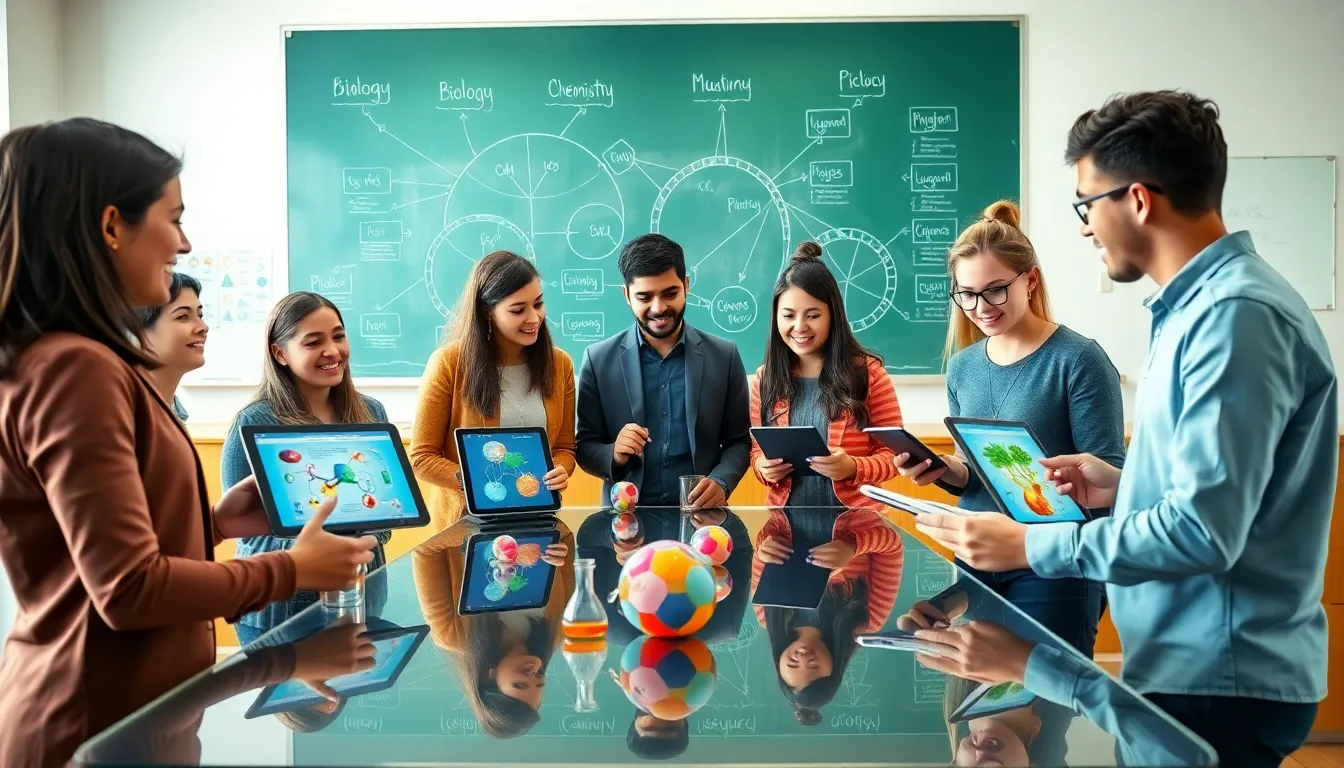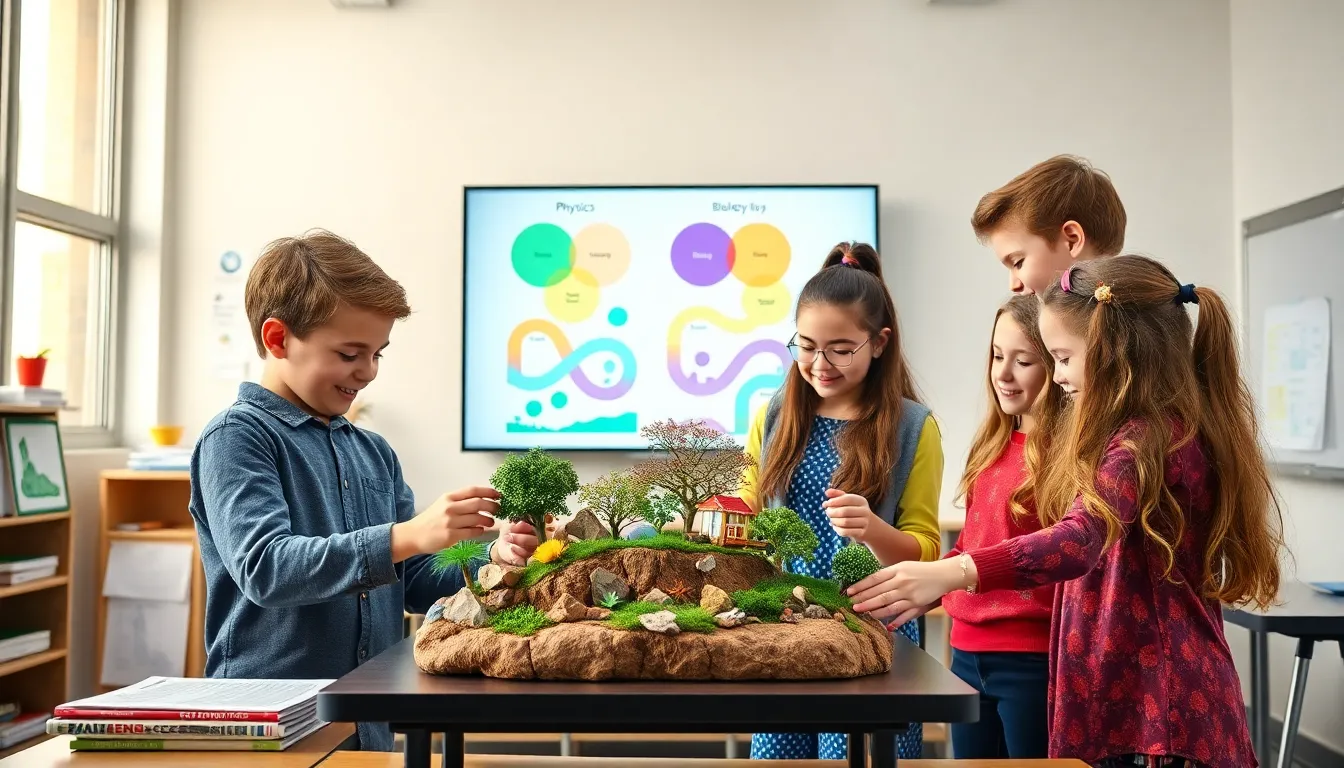Table of Contents
ToggleWhat if we told you the future of education is all about blending subjects instead of just compartmentalizing them? Integrated science is taking classrooms by storm, and trust us, it’s not just a passing trend: it’s a revolution. Picture this: students diving into science, technology, engineering, and mathematics (STEM) all in one go, like a buffet of knowledge. To the untrained eye, it may seem like utter madness, but amidst the chaos lies a method, one that encourages critical thinking, collaboration, and innovation. So grab a seat and let’s unpack the complexities and wonders of integrated science together.
Understanding Integrated Science

Integrated science is more than just a buzzword: it’s a framework that weaves together various scientific disciplines into a cohesive whole. This approach encourages students to explore connections between subjects like biology, chemistry, and physics. Imagine the excitement a student feels when they realize that the chemical reactions they learn in chemistry can be applied to biological processes. This is not only educational but also immensely engaging.
The fundamental idea behind integrated science is that real-world problems do not exist in isolation. Whether it’s climate change or medical breakthroughs, these issues are inherently complex and multifaceted. In integrated science, learners assume the role of problem-solvers, which demands critical thinking, curiosity, and creativity. This holistic perspective prepares students for the challenges of the modern world.
Importance of Integrated Science in Education
The importance of integrated science in education cannot be overstated. Think of it as an academic smoothie, rather than consuming separate fruits, you get a delicious blend that offers a well-rounded nutritional profile. The blended disciplines not only create engaging learning experiences but also improve understanding and retention. When students can relate concepts to one another, they are less likely to forget them.
Besides, integrated science fosters collaboration among students. In working together on projects, they learn to communicate effectively and consider diverse perspectives. These skills are essential in today’s job market, where teamwork and innovation reign supreme. Educational institutions are recognizing the vital role of integrated science in cultivating these skills, embedding it in curricula, and reshaping traditional lessons to meet the demands of the future.
Key Concepts in Integrated Science
Integrated science encompasses several key concepts that serve as the building blocks for student understanding. Among these is the continual interaction between different scientific fields, which enhances overall comprehension and fosters an open mind.
The Role of Technology in Integrated Science
Technology plays a pivotal role in effectively delivering integrated science. With tools like simulations and data analytics, educators can create immersive learning experiences. Students can witness phenomena that would be difficult or impossible to replicate in a classroom setting. For instance, virtual reality can transport students into a human cell to visualize how diseases affect bodily functions or simulate solar system explorations. These innovative approaches not only engage students but also cater to various learning styles.
Interdisciplinary Approaches to Learning
Interdisciplinary approaches encourage students to see the world through multiple lenses. Education systems are gradually moving away from rigid subjects and embracing an integrated curriculum that fosters connections between academic disciplines.
Challenges in Integrated Science Education
Even though its myriad benefits, integrating science education is not without its difficulties. One of the main challenges is resistance from traditional teaching methods, where disciplines are seen as separate entities. Teachers may struggle to develop a unified curriculum that ensures depth and rigor across disciplines. Besides, the lack of training and resources can hinder the effective implementation of integrated science programs, leaving educators and students in a lurch. Addressing these challenges is essential to fully capitalize on the potential of integrated science.
Future Trends in Integrated Science
As we move deeper into the 21st century, the trend towards integrated science is expected to gain momentum. One promising direction is the increased use of artificial intelligence and machine learning in educational settings. These technologies can personalize learning experiences, adapting to each student’s unique strengths and challenges.
Also, collaboration between educational institutions, industry leaders, and policymakers will further shape the future of integrated science. By aligning curriculum development with real-world applications, educators can prepare students for careers that require multidimensional skills and adaptability. The workplace of tomorrow will demand professionals who can think critically and incorporate diverse knowledge areas. With integrated science, students are not just learners: they are future innovators.



